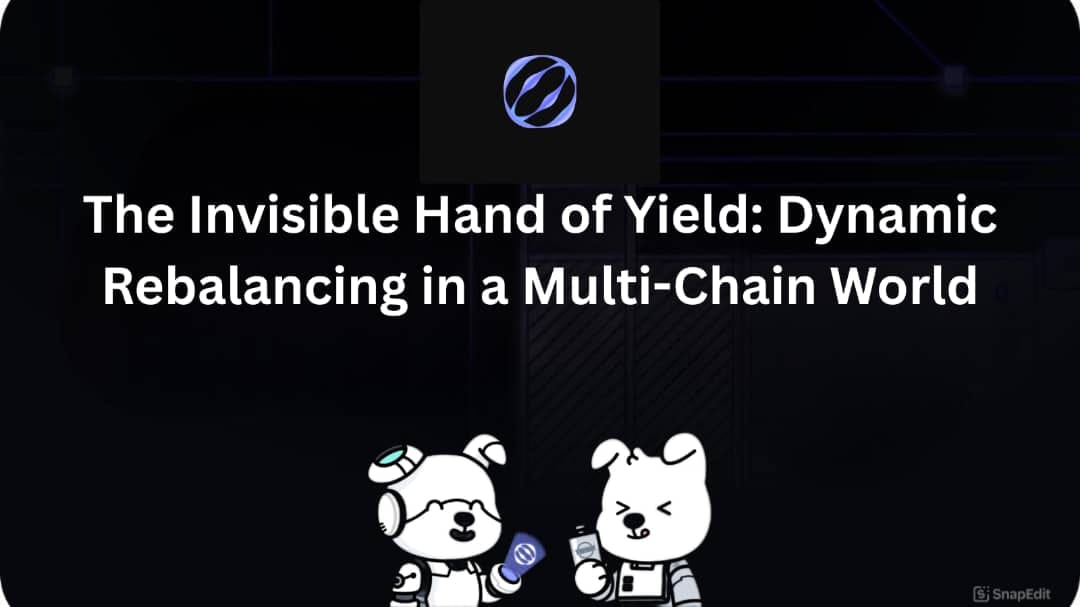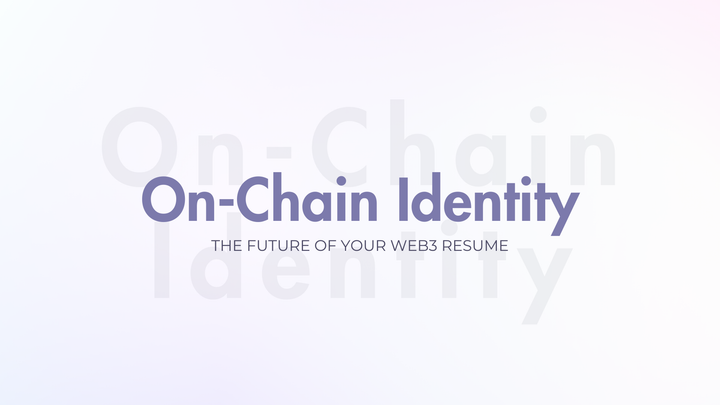The Invisible Hand of Yield: Dynamic Rebalancing in a Multi-Chain World

Introduction: Yield as an Autonomous Force in DeFi
In traditional finance, capital allocation is governed by institutional strategies and human decision-making. In DeFi, however, yield has evolved into a dynamic, automated force—an “invisible hand” driven not by manual intervention, but by code, data, and liquidity logic.
But despite its promise, the current DeFi yield landscape remains fragmented, siloed, and often inefficient, especially for liquidity providers (LPs). The rise of multi-chain ecosystems has amplified this challenge. Capital sits idle, rebalancing is manual, and returns vary wildly across chains and protocols.
Mitosis introduces a new paradigm for liquidity allocation: automated, data-driven dynamic rebalancing. Through real-time yield routing and intelligent liquidity flow automation, it enables LPs to capture returns across multiple ecosystems without lifting a finger.
This article explores the mechanism, tech stack, and vision behind Mitosis’s approach to decentralized liquidity routing, why it matters, how it works, and what it unlocks for DeFi’s future.
1.0. The Problem: Yield Fragmentation and Manual Liquidity Management
In the current DeFi landscape, LPs face three major challenges:
- Manual Rebalancing: LPs must constantly monitor yield opportunities and manually move funds across protocols and chains, an effort-intensive and error-prone process.
- Capital Inefficiency: Funds often sit idle or in suboptimal pools, missing out on high-performing opportunities due to informational or technical barriers.
- High Switching Costs: Bridging assets, interacting with multiple front-ends, paying gas fees, and re-staking or unbonding LP tokens all introduce friction and cost.
This results in yield leakage, a consistent gap between potential yield and actual yield realized by LPs.
Protocols suffer too. Without agile liquidity movement, they can’t attract capital in time to support new releases, lending markets, or token launches. Liquidity becomes reactive, not strategic.
2.0. Dynamic Yield Routing: What It Means and Why It Matters
Dynamic rebalancing refers to the automated movement of capital based on real-time return metrics, guided by programmable logic rather than human input.
In Mitosis, this takes the form of cross-chain liquidity routing governed by on-chain oracles, performance data, and ecosystem-owned liquidity vaults (EOL).
Key goals of this system:
- Optimize Yield Continuously: Instead of relying on LPs to chase returns, the system proactively allocates funds to the highest-performing opportunities.
- Reduce Operational Burden: LPs no longer need to manage multiple dashboards or jump through UX hoops to reallocate capital.
- Ensure Timely Liquidity Support: Protocols receive capital exactly when and where it’s needed most.
- Minimize Risk: Allocations can factor in security, volatility, and historical performance, not just APY.
In short, dynamic routing turns liquidity into autonomous, responsive capital—an evolution from passive LPing to actively optimized deployment.
3.0. How Mitosis Powers Dynamic Rebalancing
Mitosis achieves this invisible routing through a unique combination of protocol design, infrastructure, and data layers:
a. Multi-Chain Vault Infrastructure
Mitosis maintains a network of ecosystem-owned liquidity vaults across supported chains. Each vault holds capital supplied by LPs, governed by the Mitosis DAO, and accessible to integrated protocols.
When a yield opportunity arises on a specific chain or protocol, capital can be automatically deployed from these vaults, based on the performance signals.
b. Real-Time Yield Oracles
At the heart of this system lies the Yield Oracle—a decentralized data feed that constantly ingests APY data, risk metrics, protocol performance, and more.
This oracle isn’t limited to raw yield—it accounts for factors such as:
- TVL growth trends
- Token incentive schedules
- Security audits and exploit history
- Price volatility
- Liquidity-to-volume ratios
These signals allow Mitosis to make informed, risk-aware decisions on where capital flows.
c. Routing Algorithm and Execution Layer
The execution layer comprises smart contracts that automate liquidity movement based on oracle input and governance-defined strategies.
This includes:
- Allocation logic (e.g. weighted by APY, or capped by risk exposure)
- Deployment triggers (e.g. when delta between vaults crosses threshold)
- Rollback mechanisms in case of underperformance or exploits
- Governance overrides or DAO-voted parameter updates
This system mimics the efficiency of traditional hedge fund portfolio allocation—but with transparent, auditable rules executed on-chain.
4.0. Benefits for LPs and Protocols Alike
For LPs, the implications are profound:
- Passive Yield, Actively Managed: Deposit once, and earn optimized yield across chains without ever touching your funds again.
- No Bridging, No Manual Work: Let the protocol handle cross-chain movement, gas optimization, and rebalancing.
- Risk-Aware Allocation: Exposure to yield opportunities with security and volatility considered—not just raw numbers.
For protocols:
- On-Demand Liquidity Support: Need capital for an upcoming launch or vault deployment? If the performance metrics align, Mitosis can allocate accordingly.
- Lower Cost of Liquidity: Instead of competing for LPs, protocols can tap into the existing EOL layer and align incentives with the Mitosis ecosystem.
5.0. Governance Meets Automation: Human Input, Programmatic Execution
What makes Mitosis unique isn’t just the automation—it’s the integration of DAO governance with algorithmic execution.
Governance participants can:
- Propose new vaults or protocols to whitelist
- Define acceptable risk thresholds
- Vote on allocation strategy templates (aggressive, balanced, conservative)
- Adjust incentive weights to align long-term behavior
This hybrid model ensures human judgment remains part of the system, but at the right level, strategic input, not operational micromanagement.
6.0. The Broader Vision: Yield as a Self-Regulating Force
Mitosis represents more than a new tool, it’s a new philosophy for liquidity.
Capital should move where it’s needed. Yield should reflect not just profit potential, but risk, alignment, and value contribution. LPs should earn more for supporting mission-aligned protocols, not just chasing unsustainable incentives.
Dynamic rebalancing transforms yield from a static endpoint into a feedback loop, a force that drives liquidity allocation, ecosystem coordination, and sustainable DeFi growth.
By creating systems where capital moves not based on noise, but signal, we unlock a future where DeFi doesn’t just scale, it matures.
Conclusion: DeFi’s Liquidity Layer, Reimagined
As DeFi stretches across chains, protocols, and primitives, liquidity management can no longer rely on dashboards, Telegram alpha, or endless reallocation.
The future lies in invisible liquidity flow, an always-on system that routes capital where it belongs, based on real metrics and community governance.
Mitosis is building that future. One where yield flows like water, LPs earn without friction, and protocols grow with composable, intelligent liquidity at their side.
The invisible hand isn’t just guiding yield, it’s reshaping the very foundations of multi-chain finance.
Are you ready to be part of this transformation?



Comments ()